Installing plumbing in a private home is a complex and responsible job, but doable. By choosing the right materials and wiring diagram, you can carry out all the plumbing work yourself, without involving hired workers. But for beginners who do not have relevant experience, it is advisable to enlist the help of a professional.
Where to start installing a water supply system?
The installation of any water supply system is based on the selected wiring diagram. Only after it has been compiled can you begin selecting materials and proceed directly to installation. Also at the planning stage it is decided how many water points (or users) there will be in the house. This will determine which system to prefer - manifold or tee.
Which circuit is better - collector or tee?
The tee layout of water pipes implies their serial connection to a common riser. So, one pipe is connected to the cold and hot water pipes. With the help of tees, additional pipes are diverted to individual users, and the pipe itself ends with the connection of the last water collection point.
The advantages of this solution:
- ease of installation - no special knowledge is required when connecting additional elements;
- low cost - half as many pipes are used;
- compactness - tees are connected directly near water points.
But there are also disadvantages - when all users turn on at the same time, the pressure in the system drops significantly, and connecting a new point is quite problematic (you will have to install another tee).
The collector water supply system is characterized by a parallel connection of users, when a special splitter - a collector - is connected to the pipes for discharging cold and hot water from the riser. And each water supply point is connected to this collector.
Advantages of the collector system:
- convenience - all connection points are collected in one place;
- reliability - one pipe goes to each user, which minimizes the risk of leaks;
- pressure stability - the same pressure is supplied to each point in the manifold, so even turning on all the taps at the same time will not lead to a loss of pressure.
The disadvantages include high cost due to increased consumption of materials and the need to allocate space for connecting collectors.
The right scheme is the key to success
To avoid having to redo half of the water supply system because several key elements were forgotten during installation, it is very important to draw up the wiring diagram correctly. It must include all water points, passages and valves. The diagram shows the diameters of the pipes, the location of the water heater and pump (if the water comes from a well or borehole).
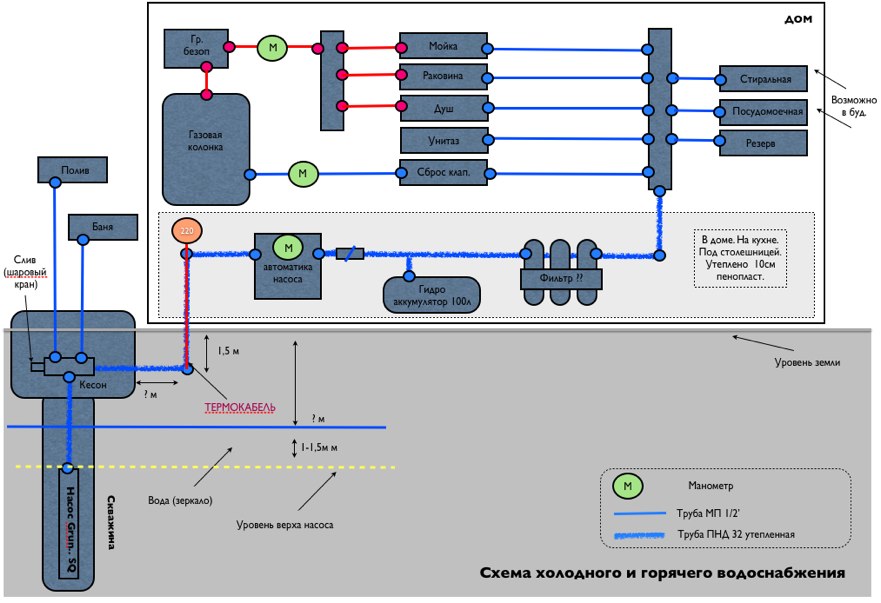
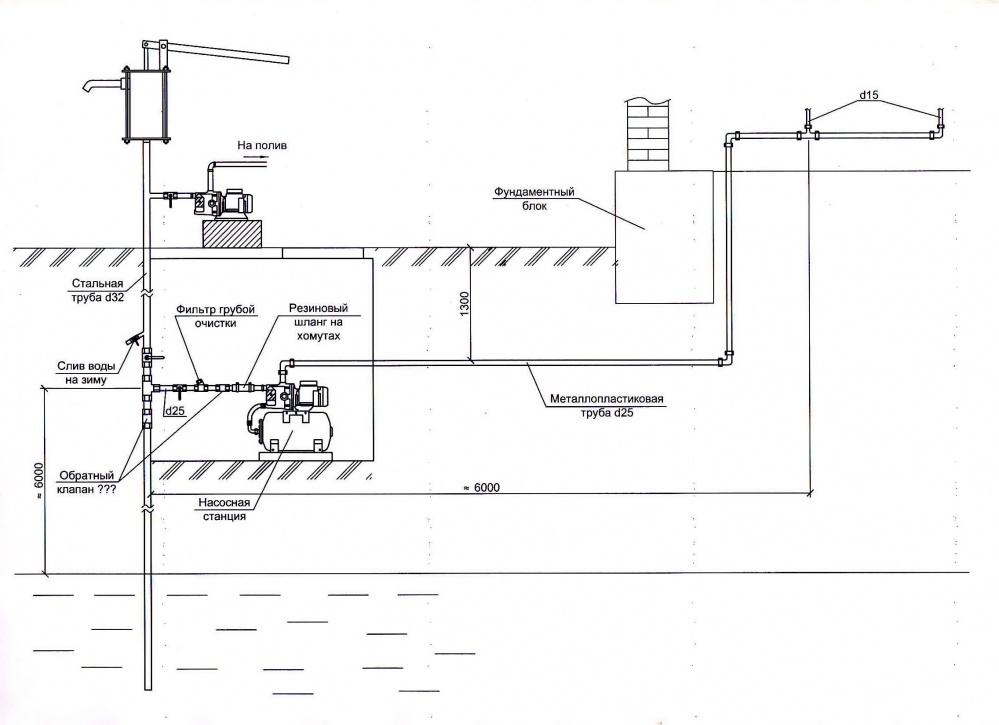
By resolving all controversial issues at the planning stage, you can avoid annoying mistakes in the future. This will also allow you to calculate in advance the required length of pipes and the number of all fittings and tees.
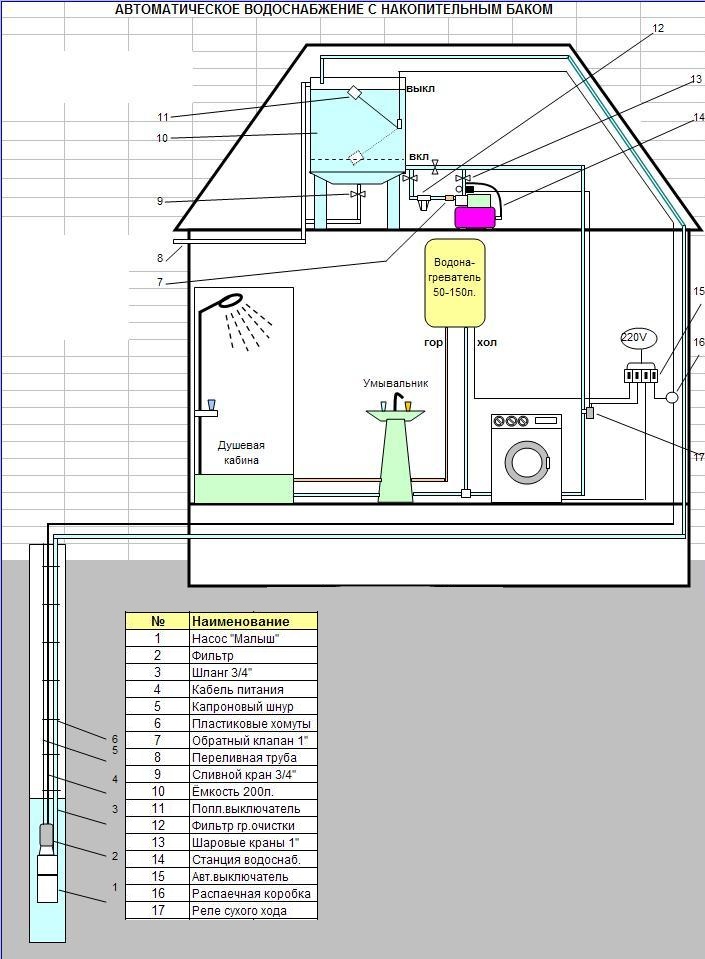
Moreover, it works effectively even when connected to a centralized water supply. For example, if the water is turned off, there will still be 200 liters of water left in the storage tank, which is enough for domestic needs. And even if there is a power outage, the tank located 4 m above the water consumers will provide a pressure of 0.4 atm, which is quite enough for water to flow from the mixers by gravity.
The scheme is quite simple:
- A storage tank is connected to the main water pipe. If water comes from central water supply pipes with variable pressure, an additional pump will have to be installed at the inlet, which will provide constant water pressure.
- To protect the pump from burnout in the absence of water, a dry running sensor is installed that turns off the power.
- If water comes from a well, only a pumping station is installed after the tank to ensure constant pressure at the water collection points. It is advisable to choose stations with already installed burnout protection. Otherwise, it is also necessary to install a dry running sensor - to turn off the station when the water in the tank runs out.
- It is important to provide protection against overflow in the storage tank - for example, a float switch.
- The routing of pipes from the tank is often tee, since this option is chosen for houses with a maximum of 5 users (shower, washbasin, toilet, washing machine and kitchen sink).
Selection of pipes - their size and material
For water supply pipes are used from:
- copper is an ideal choice, but quite expensive;
- reinforced polypropylene (PP) – installation requires a special welding machine (it can even be rented daily);
- steel - corrosion and the need for threading make such pipes unpopular;
- metal-plastic - has an excellent price-quality ratio, but can withstand temperatures only up to 95 degrees (this must be taken into account when choosing a water heater and what output temperature it gives).
Copper pipes will “outlast” even the foundation of a house, but if the budget is limited, you can choose PP or metal-plastic. At the same time, only reinforced polypropylene is used for hot water - the central reinforcing layer is visible on the cut.
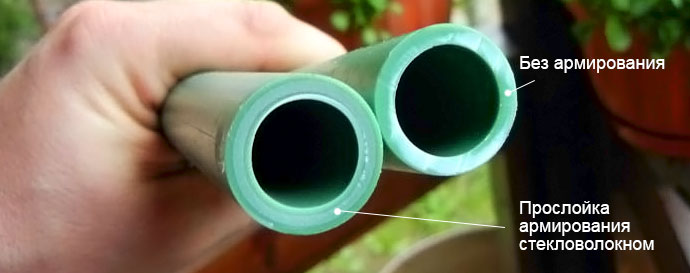
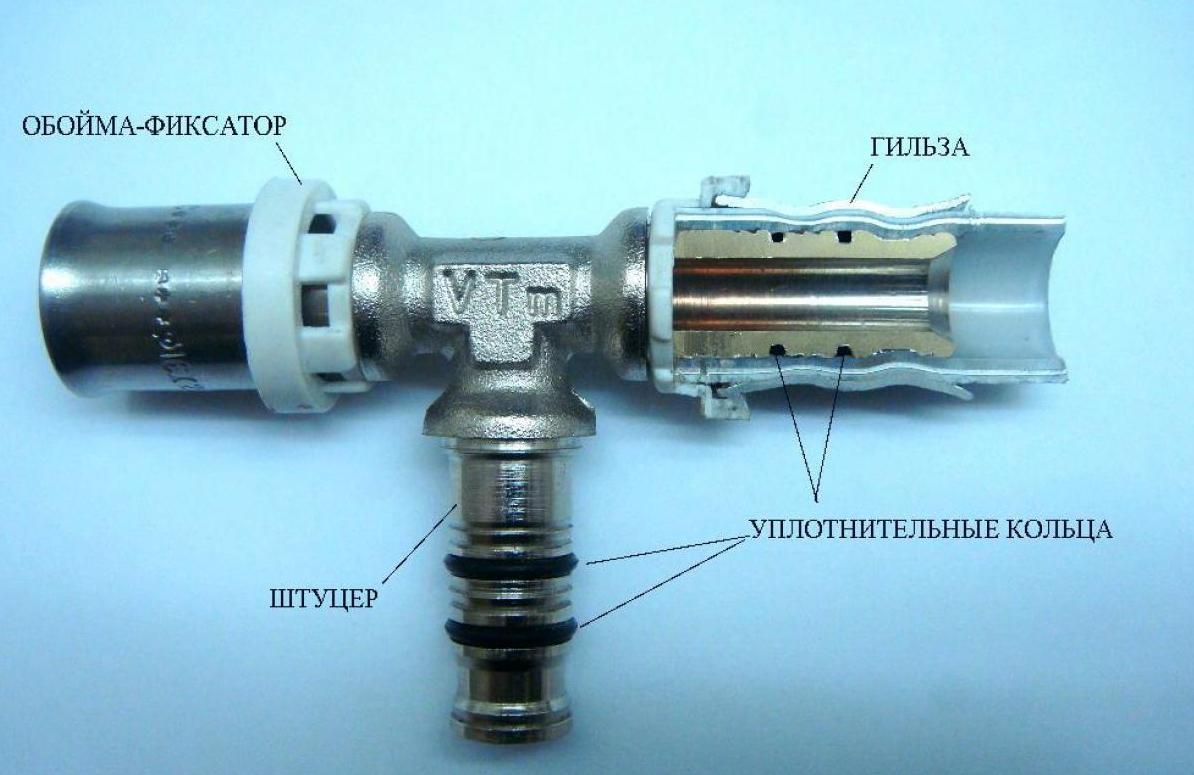
This is much more reliable than compression fittings, which will have to be tightened every year, and still they will soon begin to leak.
For laying street water supply, you can use both PP pipes and HDPE. The former are used if underground connection of pipe parts is necessary, while the latter are laid in a continuous piece.
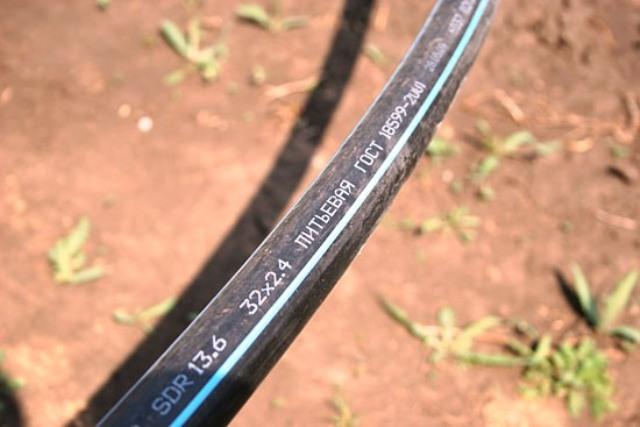
The pipe itself must have a marking (size, GOST) - pipes without markings indicate their low quality.
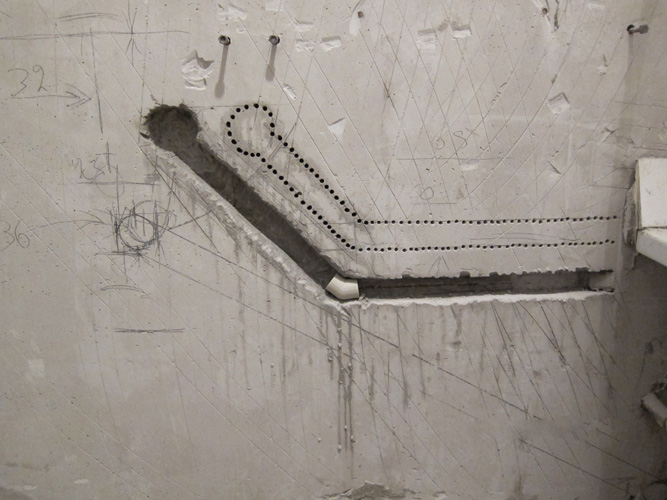
- incoming water pipe – 32 mm;
- riser pipe – 25 mm;
- branch pipes from the riser – 20 mm;
- branch pipes to devices – 16 mm.
But at the same time, you need to take into account the diameter of the connection of the devices. So, often boilers have an inch pipe outlet (25 mm), this must be taken into account at the stage of purchasing the boiler and components. In addition, instantaneous water heaters are sensitive to pressure in the system, so it is advisable to connect 20 mm pipes to them.
Pump or pumping station?
If there is no central water supply and water has to be taken from a well or well, each owner faces the question of choosing a pump. The pumping station can lift water to a height of no more than 9 m (the horizontal length of the pipes does not matter). Therefore, it is suitable for most wells or shallow wells. Its advantages are the presence of a hydraulic accumulator and a protective mechanism against burnout.
If the depth of the aquifer is below 9 meters, there is only one way out - a submersible pump. It provides stable and strong water pressure, but you will have to independently install an automatic system that protects against burnout and a storage tank. The latter is optional, but increases the life of the pump.
Installation of water supply
The installation of the water supply system itself is not particularly difficult:

The principle of working with polypropylene pipes, their soldering and installation are shown in detail in the video: